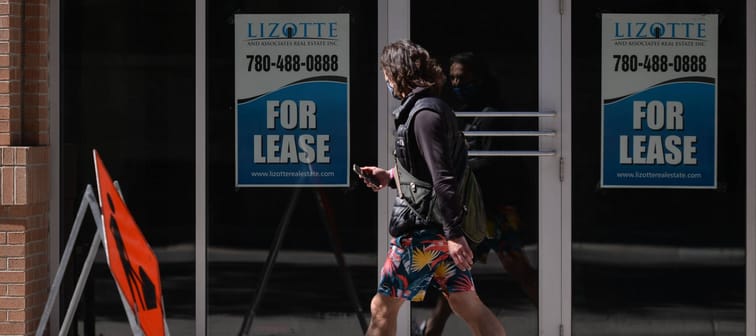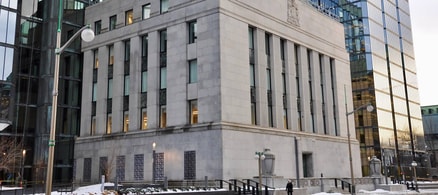The situation facing businesses could get worse
When the CFIB ran its survey in August, 76 per cent of respondents said their businesses were fully open. But only 39 per cent said they were making sales they consider normal for that time of year. Another 17 per cent said they were at half or less of their normal sales.
Despite the queasy dynamics at work, Hylton Levy, a senior partner who leads the restructuring practice at Toronto-based firm Farber, says an avalanche of failing businesses has yet to materialize.
“It’s not actually happening the way you’d anticipate,” Levy says. “Right now, we’re probably in one of the slowest corporate restructuring markets I think many of my competitors and I have seen.”
But that could soon change. The Canada Emergency Rent Subsidy and Emergency Wage Subsidy, two pandemic programs tapped by hundreds of thousands of businesses, expired Oct. 23. The government rolled out a slew of new support measures on Oct. 24, but the $7.4 billion set aside for these initiatives is a fraction of the amount businesses had access to so far. Two other issues could increase the strain for businesses.
With the global supply chain hamstrung by manufacturing and shipping backlogs, businesses’ supply shortages and increased delivery costs may dampen revenue. Those that kept staff on in a reduced capacity because of government wage subsidies may have to let people go permanently once that added support falls away. In these cases, owners may be on the hook for termination costs they don’t have the cash to cover.
“I think as soon as we [the economy and businesses] start opening up and things start getting back to normal, we’ll start seeing an influx" of companies in some form of distress, Levy says.
The warning signs
It’s not necessarily the end of the line when a business starts coming apart at the seams. Some just need to tighten a few stitches or apply a patch here and there.
But you can’t ignore some issues: lenders demanding loan repayment, landlords threatening to terminate your lease or seize your assets as payment, suppliers cutting off credit or halting deliveries.
All of those issues warrant a call for help.
Realizing that your business can no longer support itself can be brutal, but putting off your next move until the last minute could make the situation even more uncomfortable. If you know you’ve only got a 50-50 chance of making next month’s payroll, it’s better — for your business and your staff — to reach out for professional advice so you can strategize for your looming liquidity crisis.
Options for struggling business owners
If creditors aren’t making noise about getting repaid, business owners have little reason to consider going through the restructuring process. But if high debt and sputtering cash flow are becoming a problem, it’s time to weigh your options.
No two restructurings are the same, so it’s impossible to provide a rule of thumb that will guide you merrily through the process. But there are a few formal options that you’ll likely encounter in the event that your business is teetering toward closure.
If your business is viable
If your company still has promise for profitability but is facing a massive debt burden, you can make use of a couple provisions in the Bankruptcy and Insolvency Act.
You can file a Notice of Intention to Make a Proposal, or NOI, to tell creditors that you intend to make a proposal on how you’ll repay your debts. It’s more or less a heads up that you’ll soon make a repayment offer to your lenders.
An NOI is helpful if you’re dealing with creditors aggressively threatening legal action, as they can’t continue any legal claim against you until you finalize your proposal.
You also have the option of getting right to the proposal and offering your creditors a portion of the debt you owe. They’ll weigh the compromise amount, and either accept or deny your proposal. Creditors may find that an offer of 20 cents on the dollar is more than they’ll get if you declare bankruptcy. Then again, they might not.
And if they turn down your offer, most businesses are left with one option: bankruptcy.
If your business is toast
Bankruptcy is pretty much the end of the road.
“It’s definitive,” Levy says. “The minute you file a bankruptcy, you’re shut down.”
All contracts end automatically, including the immediate termination of all employees, he says.
Your assets get liquidated, and your creditors receive the proceeds according to a priority schedule. The CRA gets its cut first, followed by secured creditors, unsecured creditors and shareholders.
A business closure doesn't have to mean that you’ll spend the rest of your life shrouded in failure. Businesses fail all the time.
“The Bankruptcy and Insolvency Act is actually one of rehabilitation,” Levy says. “I’ve seen many people who have been involved in a venture that has ultimately not worked go on to a second or third venture and [have] been very successful. It’s really up to the person, and the resolve of the individual and how entrepreneurial they are.”





